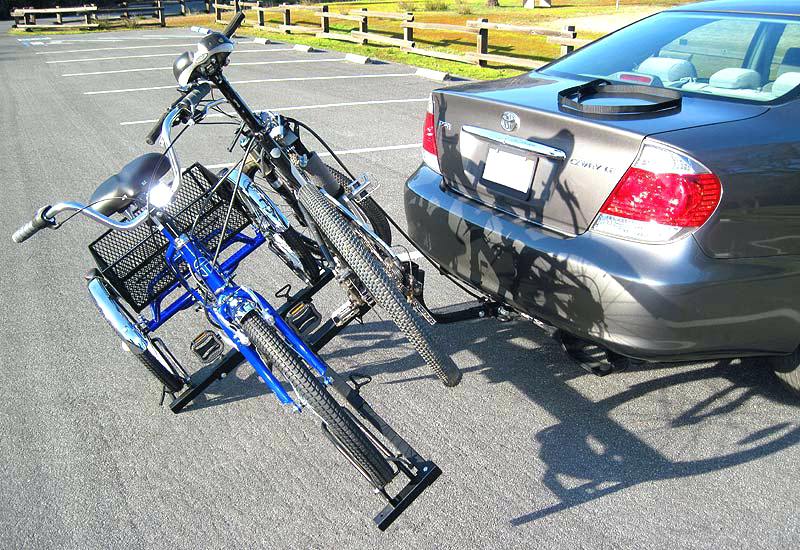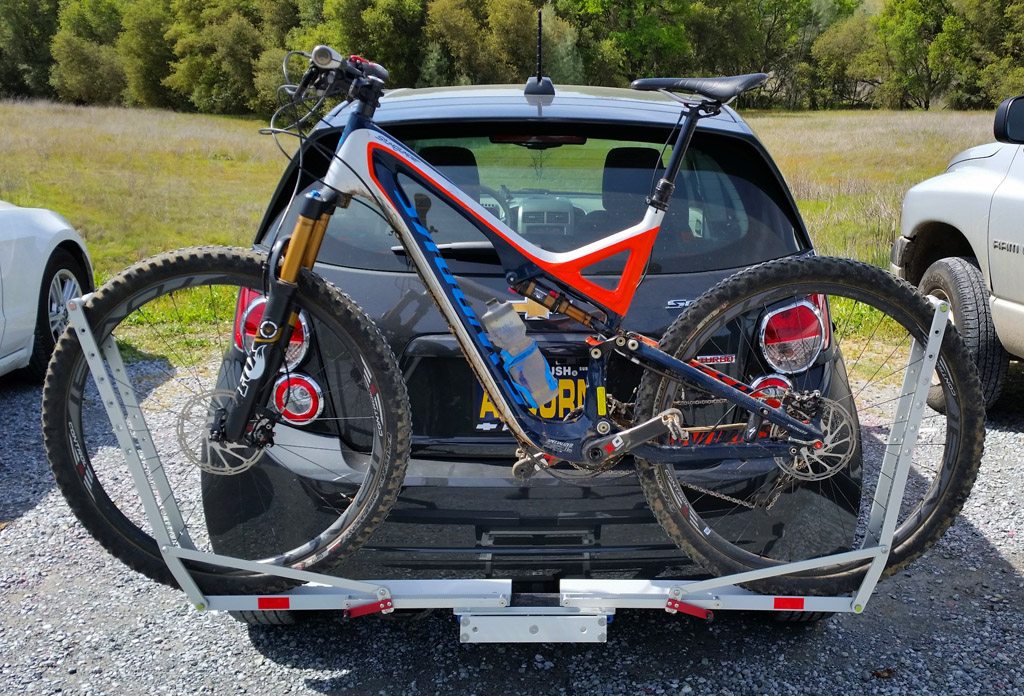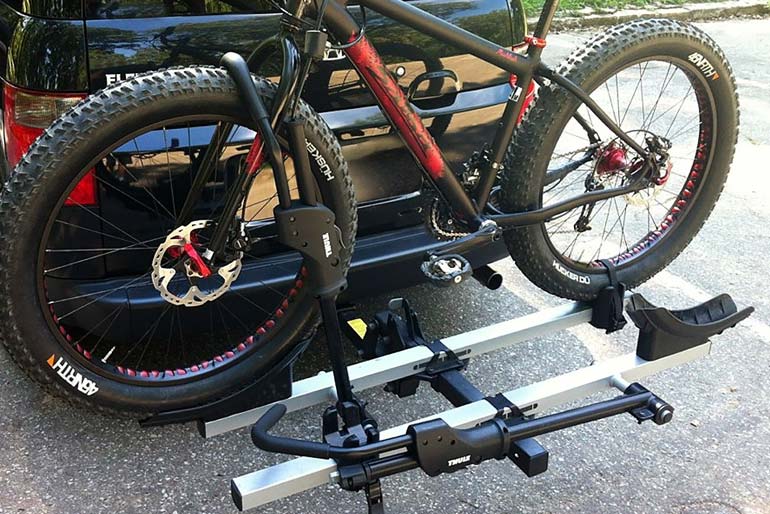An In-Depth Look at Top-Tier Bike Racks for Your Hitch
Hitch-mounted bike racks offer a secure and convenient solution for transporting bikes. These racks attach to the receiver hitch of a vehicle, providing a stable platform for one or more bikes. With numerous options available, selecting the right hitch bike rack can be challenging. This comprehensive review aims to provide an in-depth analysis of the top-rated hitch bike racks on the market, helping you make an informed decision based on your specific needs and preferences.
Factors to Consider When Choosing a Hitch Bike Rack
When selecting a hitch bike rack, there are several key factors to consider to ensure a perfect match for your vehicle and transportation needs. First and foremost, compatibility with your vehicle is crucial. Hitch bike racks are available in various sizes, typically classified by class (I, II, III, or IV). Ensure that the rack you choose is compatible with your vehicle’s hitch class and tongue weight capacity. Load capacity is another critical factor. Determine the number of bikes you need to transport and select a rack with a suitable weight capacity. Keep in mind that different bike types may have varying weights, so factor this in when making your decision.
Ease of installation is essential for a hassle-free experience. Look for hitch bike racks with tool-free installation and adjustable designs to accommodate various vehicle and bike configurations. Security features, such as integrated locks and anti-wobble devices, provide an added layer of protection and prevent bike theft or damage during transportation.
Lastly, consider the durability and construction of the hitch bike rack. Opt for racks made from high-quality materials, such as steel or aluminum, to ensure longevity and reliable performance. By taking these factors into account, you can find the perfect top-rated bike rack for your hitch that meets your specific needs and preferences.
Top Contenders in the Hitch Bike Rack Market
When it comes to transporting bikes securely and conveniently, several top-rated hitch bike racks stand out in the market. Each of these racks offers unique features and benefits, catering to various user needs and preferences.
Kuat NV 2.0 Bike Rack
The Kuat NV 2.0 is a versatile and feature-rich hitch bike rack, capable of carrying up to two bikes. Its innovative design includes a trail Doc camera mount, integrated repair stand, and a semi-integrated bike lock. The rack’s adjustable cradles and ratcheting straps ensure a secure fit for various bike frames and sizes. However, its higher price point may be a drawback for some buyers.
Thule T2 Pro XT 2 Bike Rack
The Thule T2 Pro XT 2 is a premium hitch bike rack designed for easy use and superior bike protection. Its tool-free auto attach system, along with a telescoping mast, simplifies installation and adjustment. The rack’s hanging-style design accommodates a wide range of bike frames and sizes, while the integrated cable lock and lock knob provide added security. However, its hefty price tag may be a consideration for budget-conscious consumers.
Yakima RidgeBack Hitch Bike Rack
The Yakima RidgeBack is a durable and user-friendly hitch bike rack, offering a lower-priced alternative to premium models. Its zipStrips secure bikes without contacting the frame, making it suitable for various bike types. The rack’s SpeedKnob installation system and foldable design enhance ease of use and storage. However, it lacks some features, such as an integrated lock, found in more expensive racks.
Swagman XC Cross-Country 2-Bike Hitch Mount Rack
The Swagman XC Cross-Country is an affordable and functional hitch bike rack, capable of carrying up to two bikes. Its center arm folds down when not in use, allowing for easy access to the vehicle’s cargo area. The rack’s ratcheting hooks and soft frame cradles provide a secure grip on bikes, while the anti-wobble system ensures stability during transportation. However, it may not be as durable as more expensive racks and lacks some advanced features.
In-Depth Analysis of Selected Hitch Bike Racks
In this section, we delve deeper into the design, construction, and functionality of the top-rated hitch bike racks, providing valuable insights for potential buyers.
Kuat NV 2.0 Bike Rack
The Kuat NV 2.0 is a versatile and feature-rich hitch bike rack, designed for secure and convenient bike transportation. Its robust construction includes a trail Doc camera mount, integrated repair stand, and a semi-integrated bike lock. The rack’s adjustable cradles and ratcheting straps accommodate various bike frames and sizes, ensuring a secure fit. With a weight capacity of 60 lbs per bike, it caters to a wide range of bicycles. The NV 2.0’s ease of installation is enhanced by its intuitive assembly process and tool-free adjustments.
Thule T2 Pro XT 2 Bike Rack
The Thule T2 Pro XT 2 is a premium hitch bike rack, renowned for its user-friendly design and superior bike protection. The rack’s tool-free auto attach system and telescoping mast simplify installation and adjustment, while the hanging-style design accommodates a wide range of bike frames and sizes. The T2 Pro XT 2 boasts a weight capacity of 120 lbs, distributing evenly between two bikes. Integrated cable lock and lock knob provide added security during transportation. Its durable construction ensures long-term performance and reliability.
Yakima RidgeBack Hitch Bike Rack
The Yakima RidgeBack is a well-constructed and user-friendly hitch bike rack, offering a lower-priced alternative to premium models. The rack’s zipStrips secure bikes without contacting the frame, making it suitable for various bike types. The RidgeBack’s SpeedKnob installation system and foldable design enhance ease of use and storage. With a weight capacity of 150 lbs, it caters to a wide range of bicycles. Although its construction is not as robust as more expensive racks, the RidgeBack provides excellent value for its price point.
Swagman XC Cross-Country 2-Bike Hitch Mount Rack
The Swagman XC Cross-Country is a budget-friendly and functional hitch bike rack, designed for secure bike transportation. Its ratcheting hooks and soft frame cradles provide a secure grip on bikes, while the anti-wobble system ensures stability during transportation. The XC Cross-Country has a weight capacity of 35 lbs per bike, accommodating various bicycle types. Although its construction is not as sturdy as higher-priced racks, the XC Cross-Country offers an affordable solution for occasional bike transportation needs.
Comparing the Top Hitch Bike Racks: Pros and Cons
In this section, we compare and contrast the top-rated hitch bike racks, highlighting their pros and cons to help potential buyers make informed decisions. We also provide recommendations based on different scenarios, such as family bike transportation, solo riders, and long-distance travel.
Kuat NV 2.0 Bike Rack vs. Thule T2 Pro XT 2 Bike Rack
Both the Kuat NV 2.0 and Thule T2 Pro XT 2 are premium hitch bike racks, offering superior design, construction, and functionality. The NV 2.0 features a trail Doc camera mount, integrated repair stand, and a semi-integrated bike lock, while the T2 Pro XT 2 boasts a tool-free auto attach system, telescoping mast, and integrated cable lock. For families or groups, the Thule T2 Pro XT 2 is the better choice due to its higher weight capacity (120 lbs vs. 60 lbs on the NV 2.0) and ability to accommodate larger and heavier bikes. However, for solo riders or those with lighter bikes, the Kuat NV 2.0 is a more compact and maneuverable option. Ultimately, the decision between these two racks depends on the user’s specific needs and preferences.
Yakima RidgeBack Hitch Bike Rack vs. Swagman XC Cross-Country 2-Bike Hitch Mount Rack
The Yakima RidgeBack and Swagman XC Cross-Country are both budget-friendly options, catering to occasional bike transportation needs. The RidgeBack features zipStrips that secure bikes without contacting the frame, while the XC Cross-Country utilizes ratcheting hooks and soft frame cradles. For users seeking a more robust and durable option, the Yakima RidgeBack is the better choice, with its SpeedKnob installation system and foldable design. However, for those on a tighter budget, the Swagman XC Cross-Country offers an affordable solution with its anti-wobble system and secure bike grip. Again, the decision between these two racks depends on the user’s specific needs and budget constraints.
How to Install and Use a Hitch Bike Rack
Installing and using a hitch bike rack can be a straightforward process when following the manufacturer’s instructions and observing safety precautions. Here is a step-by-step guide on how to install and use a hitch bike rack:
Step 1: Choose the Right Hitch Bike Rack
Select a top-rated bike rack for hitch that is compatible with your vehicle and meets your specific needs in terms of load capacity, ease of installation, security features, and durability.
Step 2: Assemble the Rack
Follow the manufacturer’s instructions to assemble the bike rack. This may involve attaching the receiver mount to the rack, installing any additional features such as integrated locks or anti-wobble devices, and ensuring all components are securely fastened.
Step 3: Install the Rack on the Vehicle
Align the receiver mount with the hitch receiver on your vehicle and insert it securely. Ensure that the rack is level and properly aligned before tightening any bolts or clamps. Double-check all connections before proceeding to the next step.
Step 4: Secure the Bikes
Place the bikes on the rack, ensuring that they are properly positioned and secured using the provided straps, hooks, or cradles. Make sure that the bikes do not obstruct the vehicle’s lights, mirrors, or license plates and that they are securely fastened to prevent any movement during transportation.
Step 5: Double-Check All Connections
Before hitting the road, double-check all connections, ensuring that the rack is securely attached to the vehicle and that the bikes are properly fastened. It is essential to follow the manufacturer’s instructions and safety guidelines to prevent any accidents or damage to the vehicle or bikes.
Step 6: Safe Transportation
Once everything is secure, you can safely transport your bikes using the hitch bike rack. Remember to adhere to any speed limits or restrictions and to avoid sudden stops, starts, or turns that may cause the bikes to shift or become dislodged.
Maintaining Your Hitch Bike Rack: Tips and Tricks
Proper maintenance and care are crucial to ensuring the longevity and performance of your top-rated bike rack for hitch. Here are some tips and tricks on how to maintain and care for your hitch bike rack:
Cleaning Your Hitch Bike Rack
Clean your hitch bike rack regularly to remove dirt, debris, and grime that can accumulate during use. Use a mild detergent and warm water to gently clean the rack, ensuring that all components are thoroughly rinsed and dried. Avoid using high-pressure washers or abrasive materials that can damage the rack’s finish or components.
Lubricating Moving Parts
Lubricate any moving parts, such as hinges, latches, or locks, to ensure smooth operation and prevent wear and tear. Use a high-quality lubricant, such as a silicone-based spray or oil, and follow the manufacturer’s instructions for application and frequency.
Inspecting for Damage
Regularly inspect your hitch bike rack for any signs of damage, such as cracks, bends, or rust. Address any issues promptly to prevent further damage or potential safety hazards. If you notice any significant damage, consult the manufacturer’s instructions or contact a professional for assistance.
Storing Your Hitch Bike Rack
Proper storage is essential to maintaining the longevity and performance of your hitch bike rack. Store the rack in a dry, clean, and protected area, such as a garage or shed, to prevent exposure to the elements. If possible, disassemble the rack and store it in its original packaging or a designated storage bag to minimize damage and ensure easy access when needed.
Seasonal Maintenance
Perform seasonal maintenance on your hitch bike rack to ensure optimal performance and longevity. This may include tightening any loose bolts or screws, inspecting for wear and tear, and lubricating any moving parts. Consult the manufacturer’s instructions for specific seasonal maintenance recommendations and guidelines.
Frequently Asked Questions About Hitch Bike Racks
Here are some frequently asked questions about hitch bike racks, providing clear and concise answers backed by research and expert opinions:
Q: Are hitch bike racks compatible with all vehicles?
A: Hitch bike racks are generally compatible with most vehicles that have a trailer hitch receiver. However, it is essential to check the manufacturer’s compatibility guidelines and consult with a professional if you are unsure. Factors such as the vehicle’s hitch class, tongue weight capacity, and available space should be considered when selecting a hitch bike rack.
Q: What is the weight capacity of hitch bike racks?
A: The weight capacity of hitch bike racks varies by model and manufacturer. Most top-rated bike racks for hitch have a weight capacity ranging from 35 to 100 lbs, accommodating one to five bikes. It is crucial to select a rack with a weight capacity that meets your specific needs and preferences.
Q: How do I secure my bikes to the hitch bike rack?
A: Most hitch bike racks come with straps, hooks, or cradles that secure the bikes to the rack. It is essential to follow the manufacturer’s instructions and double-check all connections before hitting the road. Some hitch bike racks also feature integrated locks or anti-wobble devices for added security and stability.
Q: Are hitch bike racks easy to install?
A: Hitch bike racks are generally easy to install, with most models requiring no drilling or modification to the vehicle. However, it is essential to follow the manufacturer’s instructions carefully and double-check all connections before use. Some hitch bike racks feature tool-free installation or quick-release levers for added convenience.
Q: How do I store my hitch bike rack when not in use?
A: Proper storage is essential to maintaining the longevity and performance of your hitch bike rack. Store the rack in a dry, clean, and protected area, such as a garage or shed, to prevent exposure to the elements. If possible, disassemble the rack and store it in its original packaging or a designated storage bag to minimize damage and ensure easy access when needed.







